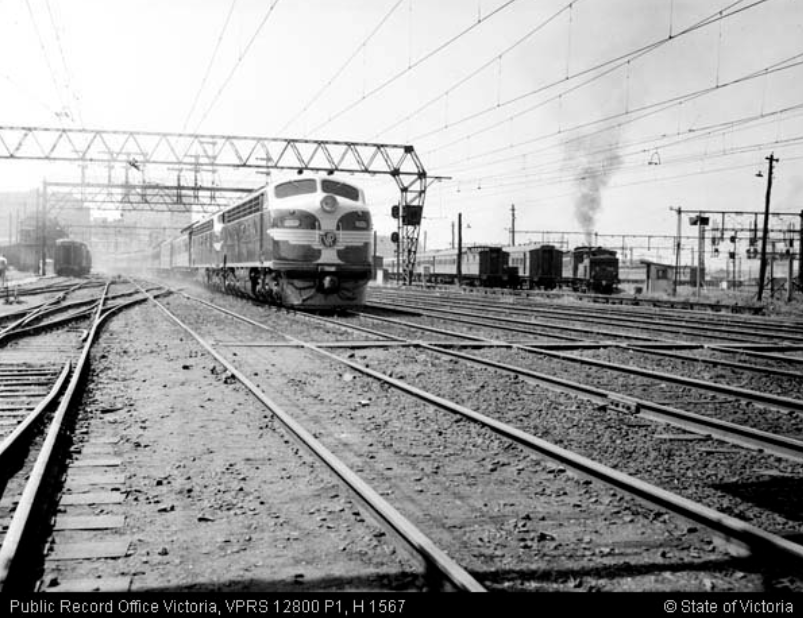
However, the A A continued in service in assistant duties, as well as hauling show and race train specials. With the introduction of larger, heavier express passenger rolling stock in the form of the E type carriages of 1906, the VR introduced the considerably more powerful A2 class 4-6-0 in 1907, which superseded the A A class on premier services. They were chosen to haul the Royal Train of the Duke and Duchess of Cornwall in 1901. Upon introduction in 1900, the A A went into service on mainline passenger service, hauling key express services such as the Sydney Express. Locomotive A A 548 decorated for a Royal Train in 1901 The second batch had a slightly larger firebox and grate, a 200 psi boiler pressure and larger four-axle tenders. The first batch of ten, delivered in 1900-01, were delivered with a traditional three-axle tender. Twenty of the class were built by the Phoenix Foundry in Ballarat, entering service between 19. Future VR locomotive designs were based on three or four coupled axles. Its high tractive effort and limited adhesive weight (due to axle load constraints and only two powered axles) combined to produce a less than ideal factor of adhesion of 3.5. With an axle load of 16.85 long tons (17.12 t 18.87 short tons), the A A had reached the design limits of size and power possible with a two coupled axle locomotive type with Victoria's relatively light track infrastructure. 422 demonstrated considerably greater efficiency and reduced maintenance, and the A A became the first of many subsequent VR locomotive classes to be built with piston valves. A trial installation of overhead piston valves on New A class locomotive No. With a comparatively high 185 pounds per square inch (1.28 MPa) boiler, later increased to 200 pounds per square inch (1.4 MPa), it was considered impractical to use traditional slide valves. 9 injectors, horizontal grid spark arrestors, steam for auxiliaries supplied directly from the dome, and a sloped ashpan to provide easier cleaning. Innovative design features of the A A class included air sanding equipment, improved Gresham No.


With traffic needs continuing to grow, the VR drafting office decided to take the best features of the New A and X class, but enlarge the locomotive with a larger, higher pressure boiler and larger cylinders. The 'New A' class 4-4-0 of 1889 had proven to be a successful design, as had its close cousin and exact contemporary the X class 0-6-0. In 1900, Victorian Railways still ran express passenger trains with the successful but ageing B class 2-4-0 which dated back to 1862. The largest, heaviest and most powerful 4-4-0 steam locomotive to run in Australia, it was the final development of this locomotive type in Australia. The A A class was an express passenger locomotive that ran on the Victorian Railways between 19. 32 long tons (33 t 36 short tons) (roadworthy)ĩ1.1 long tons (92.6 t 102.0 short tons)


 0 kommentar(er)
0 kommentar(er)
